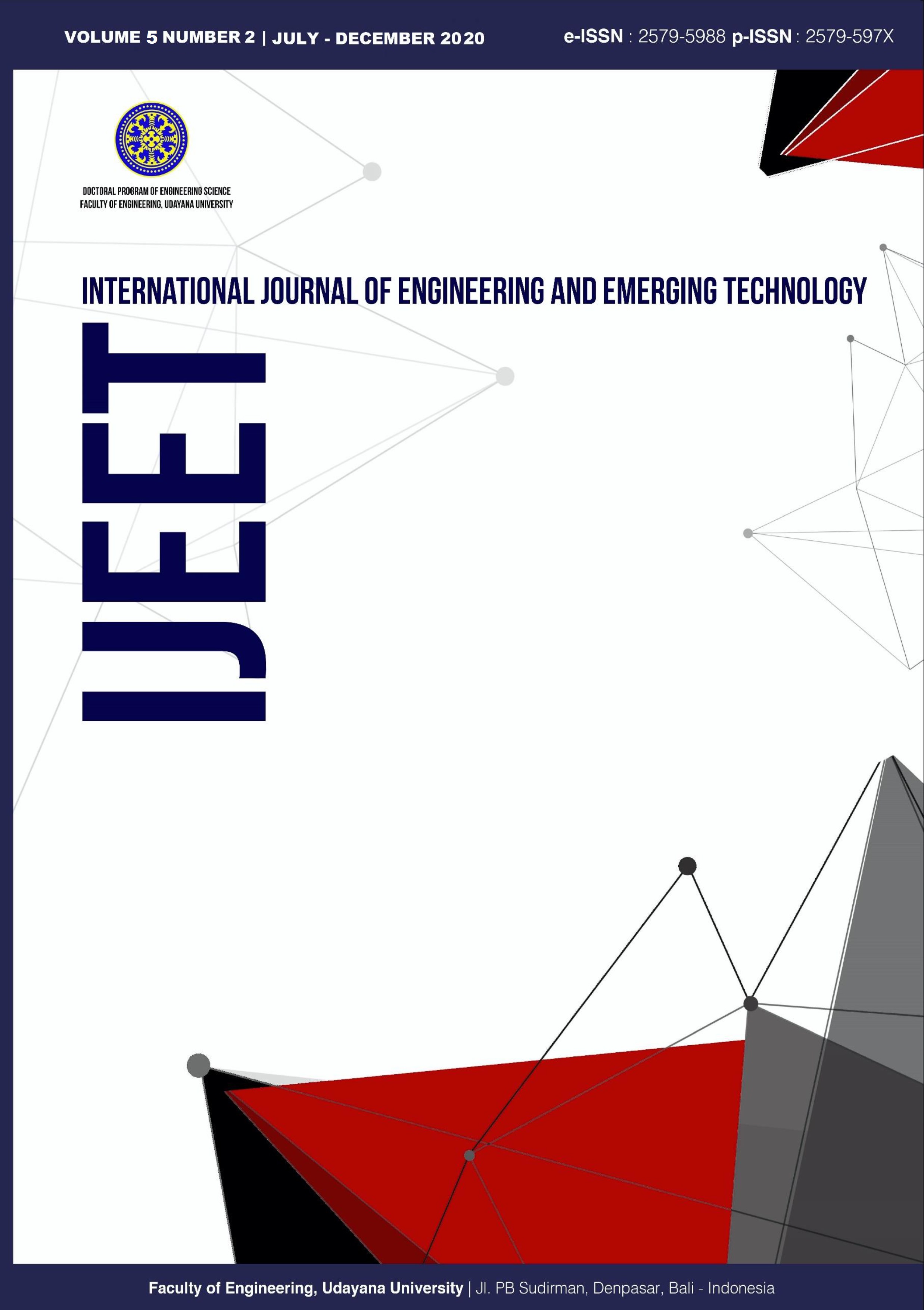A Deep Learning Approach For COVID 19 Detection Via X-Ray Image With Image Correction Method
Abstract
In the mitigation effort for reducing the spread of the SARS-CoV-2 pandemic in Indonesia, finding, detecting, and containing the suspect be a very crucial step to contain the virus. One of the ways that this can be detected is by thorax x-ray examination by the expert. Transferring the doctor's knowledge to a computer makes the task more scalable and precise. This can be done by building a small artificial intelligence using a simple CNN model to detect COVID biomarkers' presence in x-ray images. As the AI relies heavily on the x-ray dataset as the system's underlying basis has a good quality dataset is very important. However, the x-ray data tend to have a noise problem that will affect their overall system quality. We did a little comparative study with the objective to improve the quality of the dataset with three techniques of image enhancement, namely color denoising, mean denoising, and contrast enhancement, with the mean denoising outperform the other image manipulation method by 4%, which yield the accuracy of the system to 95% with 100 pieces of real-world test data. Hopefully, this study would inspire future studies improving the tech-based pandemic mitigation technology In the future.
Downloads
References
[2] V. C. C. Cheng, S. C. Wong, G. S. W. Kwan, W. T. Hui, and K. Y. Yuen, “Disinfection of N95 respirators by ionized hydrogen peroxide during pandemic coronavirus disease 2019 (COVID-19) due to SARS-CoV-2,” J. Hosp. Infect., vol. 105, no. 2, pp. 358–359, 2020.
[3] H. R. Pourghasemi et al., Spatial modeling, risk mapping, change detection, and outbreak trend analysis of coronavirus (COVID-19) in Iran (days between February 19 and June 14, 2020), vol. 98, no. June. International Society for Infectious Diseases, 2020.
[4] I. P. A. E. D. Udayana, M. Sudarma, and P. G. S. C. Nugraha, “Implementation of Convolutional Neural Networks to Recognize Images of Common Indonesian Food Implementation of Convolutional Neural Networks Recognize Images of Common Indonesian Food,” Int. Conf. Appl. Sci. Inf. Technol., pp. 1–7, 2020.
[5] M. Barstugan, U. Ozkaya, and S. Ozturk, “Coronavirus (COVID-19) Classification using CT Images by Machine Learning Methods,” no. 5, pp. 1–10, 2020.
[6] I. D. Apostolopoulos and T. A. Mpesiana, “Covid-19: automatic detection from X-ray images utilizing transfer learning with convolutional neural networks,” Phys. Eng. Sci. Med., vol. 43, no. 2, pp. 635–640, 2020.
[7] P. Afshar, S. Heidarian, F. Naderkhani, A. Oikonomou, K. N. Plataniotis, and A. Mohammadi, “COVID-CAPS: A Capsule Network-based Framework for Identification of COVID-19 cases from X-ray Images,” pp. 1–5, 2020.
[8] A. E. Hassanien, L. N. Mahdy, K. A. Ezzat, H. H. Elmousalami, and H. A. Ella, “Automatic X-ray COVID-19 Lung Image Classification System based on Multi-Level Thresholding and Support Vector Machine,” medRxiv, p. 2020.03.30.20047787, 2020.
[9] M. Fang et al., “CT radiomics can help screen the Coronavirus disease 2019 (COVID-19): a preliminary study,” Sci. China Inf. Sci., vol. 63, no. 7, pp. 1–8, 2020.
[10] A. A. Farid, G. I. Selim, H. Awad, and A. Khater, “A Novel Approach of CT Images Feature Analysis and Prediction to Screen for Corona Virus Disease (COVID-19),” Int. J. Sci. Eng. Res., vol. 11, no. 3, 2020.
[11] J. Gong et al., “A Tool to Early Predict Severe Corona Virus Disease 2019 (COVID-19) : A Multicenter Study using the Risk Nomogram in Wuhan and Guangdong, China,” Clin. Infect. Dis., vol. 2019, 2020.
[12] D. Al-karawi, S. Al-Zaidi, N. Polus, and S. Jassim, “Machine Learning Analysis of Chest CT Scan Images as a Complementary Digital Test of Coronavirus (COVID-19) Patients,” medRxiv, no. April, p. 2020.04.13.20063479, 2020.
[13] P. K. Sethy, S. K. Behera, P. K. Ratha, and P. Biswas, “Detection of coronavirus Disease (COVID-19) based on Deep Features and Support Vector Machine,” Int. J. Math. Eng. Manag. Sci., vol. 5, no. 4, pp. 643–651, 2020.
[14] I. P. A. E. D. U. Udayana and P. G. S. C. Nugraha, “PREDIKSI CITRA MAKANAN MENGGUNAKAN CONVOLUTIONAL NEURAL NETWORK UNTUK MENENTUKAN BESARAN KALORI MAKANAN,” J. Teknol. Inf. dan Komput., vol. 6, no. 1, pp. 30–38, 2020.
[15] G. Zhao, G. Liu, L. Fang, B. Tu, and P. Ghamisi, “Multiple convolutional layers fusion framework for hyperspectral image classification,” Neurocomputing, vol. 339, pp. 149–160, 2019.

 Indexed By
Indexed By







